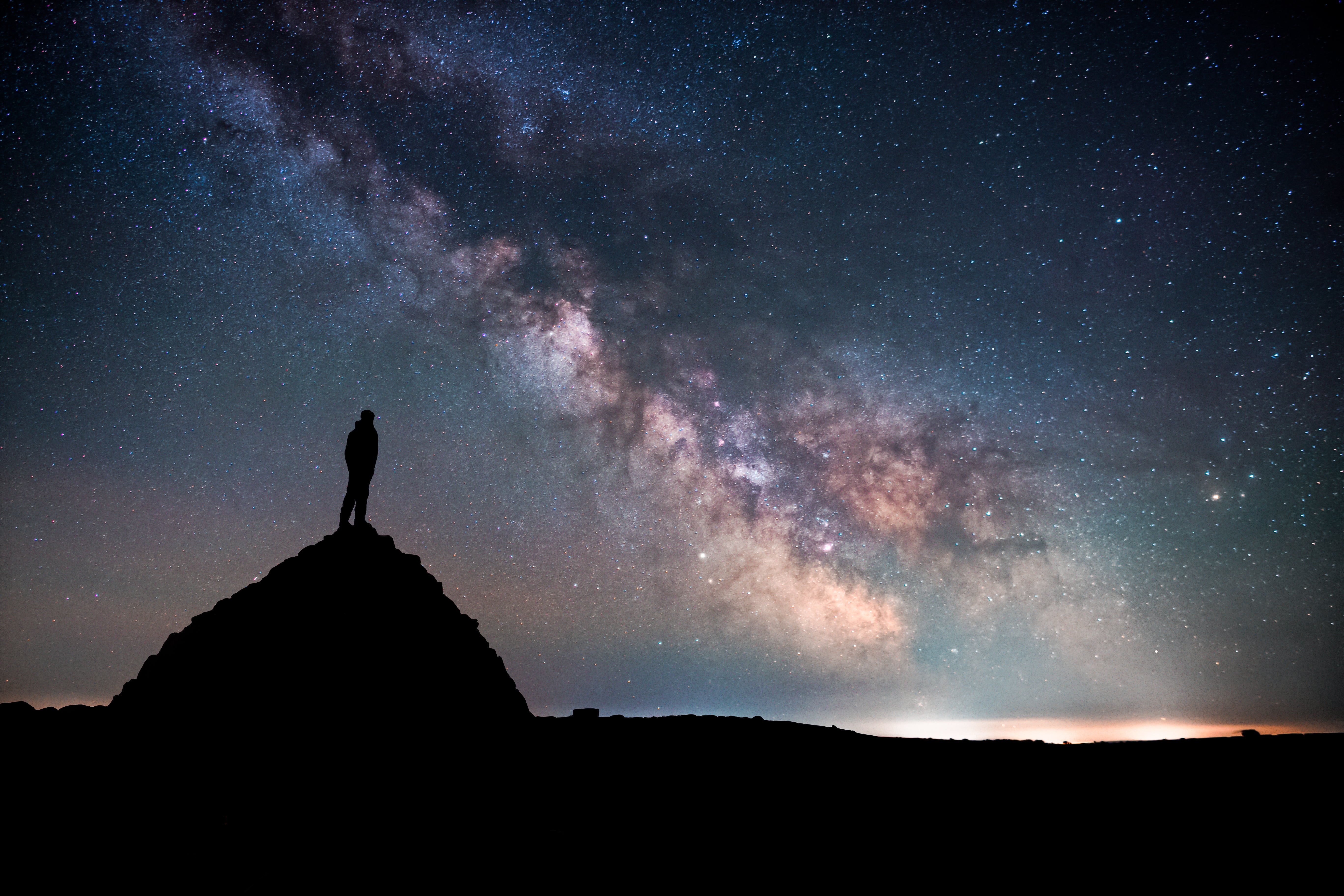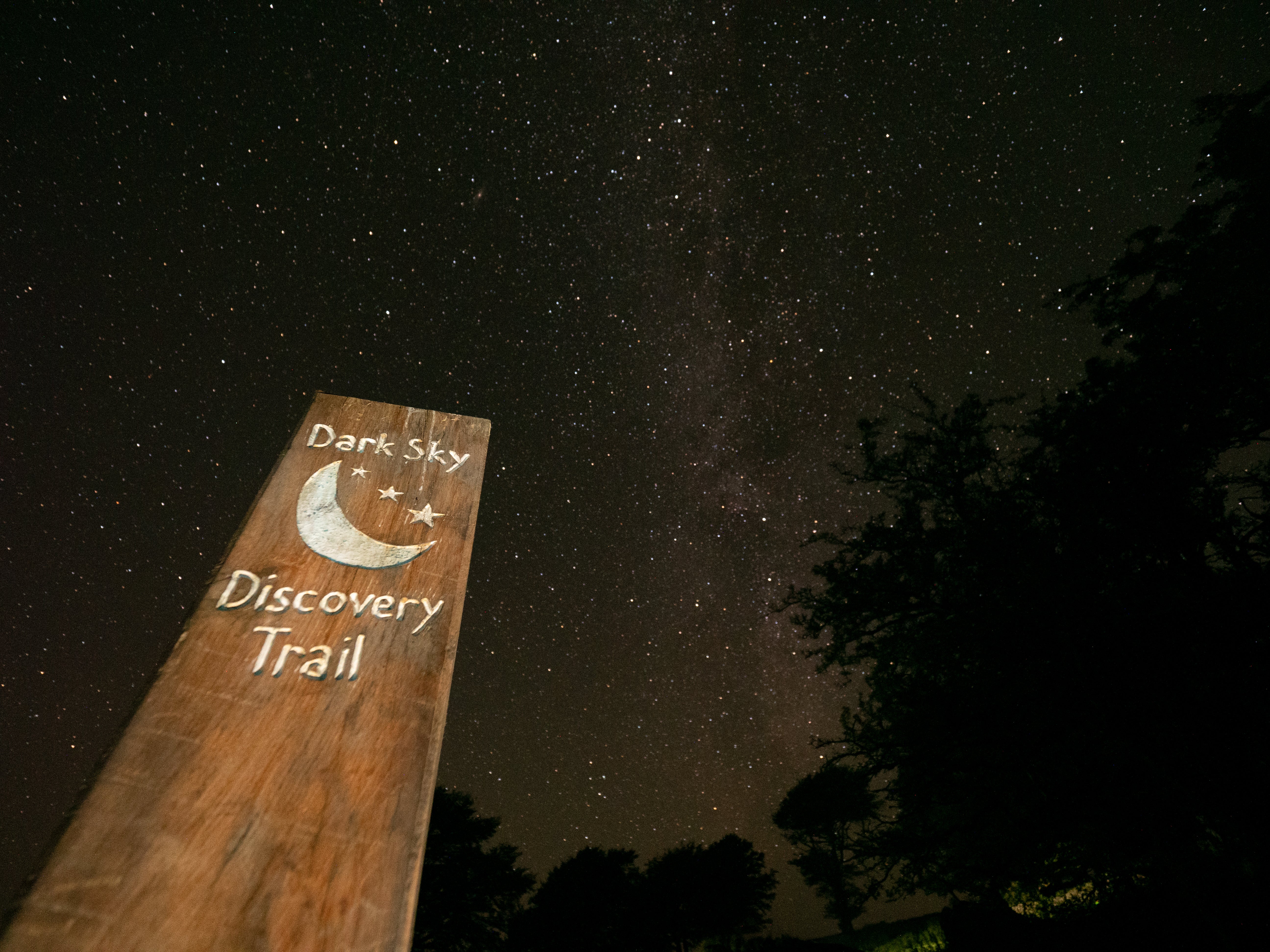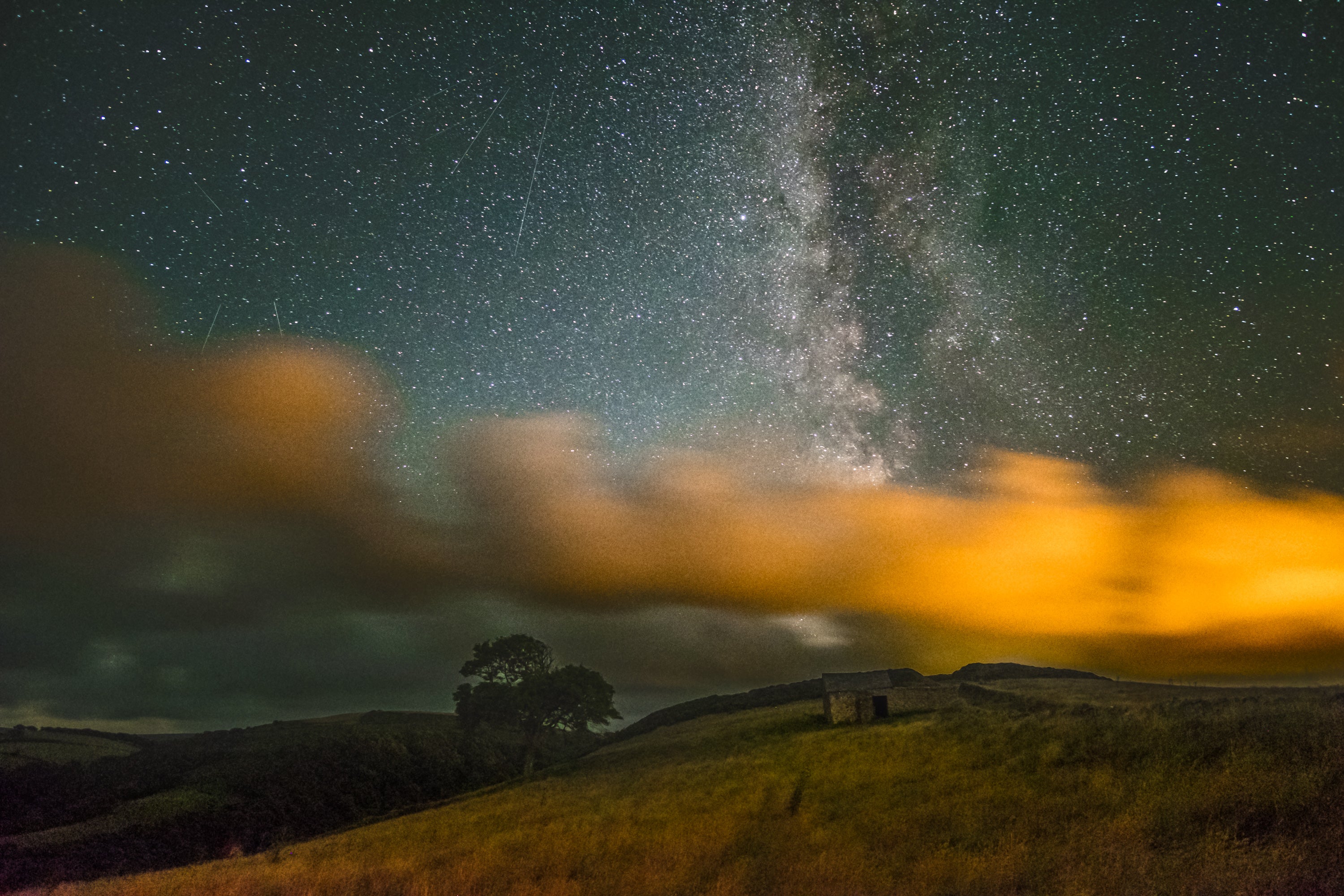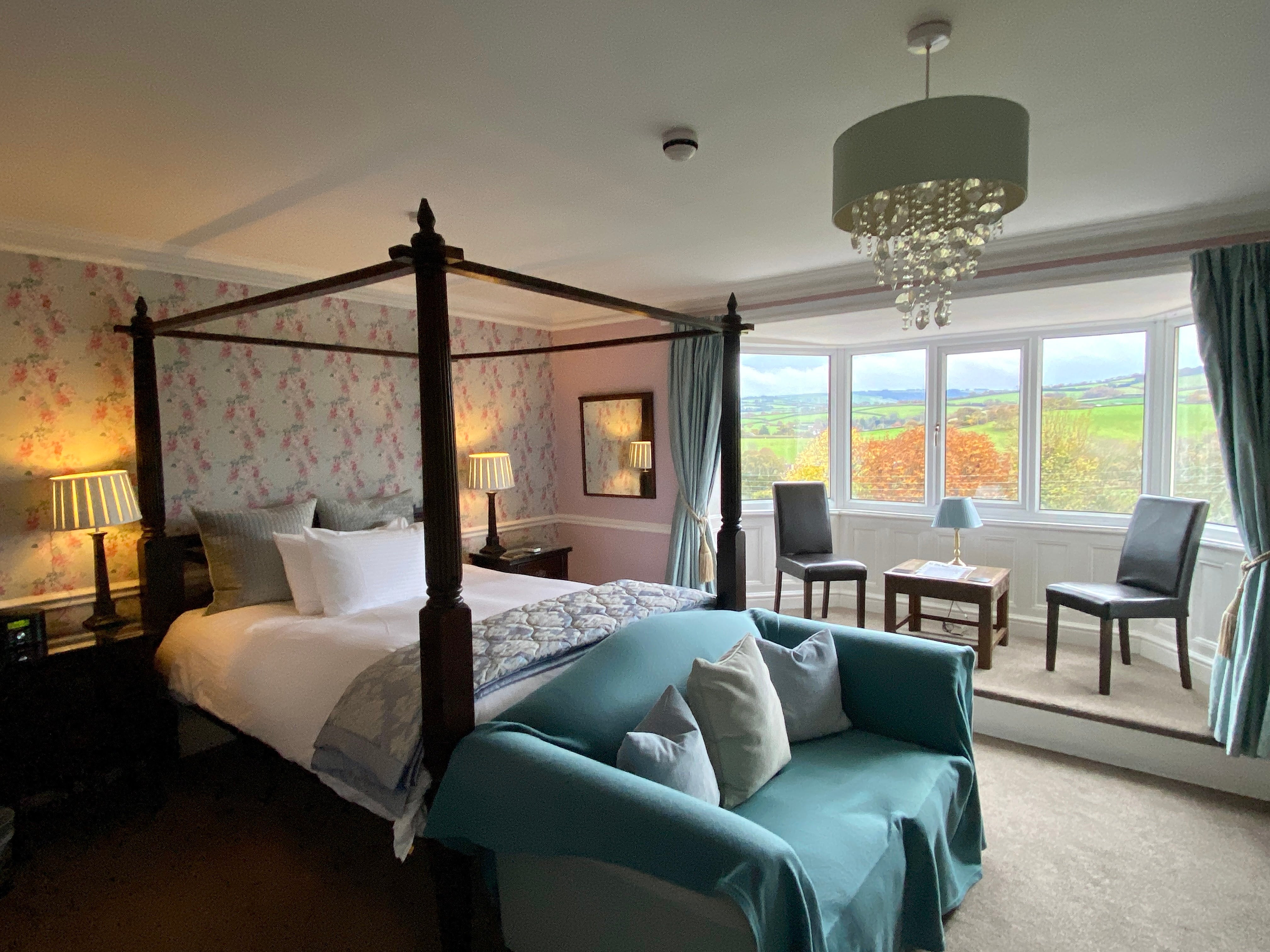Starry, starry night: why Exmoor’s new dark sky walking trail is midwinter magic
The UK is a honeypot of dark-sky areas – but Exmoor is its oldest reserve and best-kept starry secret, says Megan Eaves

Standing on open heath with a bowl of starry constellations above and the sound of nightjars calling across the moor, you could be in 2021 or 1821. This is Exmoor, Europe’s oldest dark-sky reserve, and standing under a light-speckled sky, it’s not difficult to imagine what life was like hundreds of years ago. Then, in the days before human-made light pollution, a night sky like this was visible everywhere. Now, less than 10 per cent of people in the UK can see a natural night sky, so you have to travel to special, unlit places like Exmoor to see the stars at their frosted finest.
Exmoor was crowned Europe’s first International Dark Sky Reserve back in 2011, but thanks to its remoteness and the fact that it takes a bit of effort to get here (there are no motorways or easy public transport options), it remains a wonderfully secret corner of Britain in which to gaze up at the cosmos. In 2021, to celebrate its 10th anniversary, Exmoor unveiled a new “Dark Sky Discovery Trail”. This atmospheric, two-mile walk follows an easy track across utterly dark moorland, lit only by glow-in-the-dark waymarkers to keep visitors on the right route.
Standing under a light-speckled sky, it’s not difficult to imagine what life was like hundreds of years ago
The fairly flat track is right in the centre of Exmoor, chosen because it’s in the heart of the park’s darkest zone atop a hill. There are no trees, no buildings and no light. It takes about 20 minutes for human eyes to adjust to the dark. As you walk, your eyes slowly begin to see the outlines of white chalk stones and the glimmer of muddy patches along the path. You make out the odd, scraggly hawthorn tree, outline of a fence or shadowy hump of a hill.

Dan James, rural enterprise manager for Exmoor National Park, says that the park chose this location for a reason: “The trail goes over totally open hilltop moorland, so you actually see the full dome of sky above you in any direction.” And he’s not wrong. On a clear night, the Milky Way arcs in a white stream and, with no sources of light pollution nearby, you can see stars from horizon to horizon.
The sheer number of stars visible here offers an epic perspective on our tiny-yet-huge place in the universe – particularly comforting in this time when bad news and unsettling headlines seem to be everywhere. Under the stars, you feel a sense of ancient peace that’s tough to access in the bustle of urban life.
Make no mistake, though: this is an adventure, not a romantic stroll. Even over relatively flat surfaces, walking in the dark is totally unlike walking during the day. With less aid from the eyes, your other senses are heightened. Your skin prickles as the wind whistles across the hills and you wonder if that is, really, the faraway lowing of Highland cattle. Your feet make out the uncertain depth of the ground beneath them. Your spine senses the low rumble of a car zooming some unknown distance away. And there is a deep, deep silence.
Under the stars, you feel a sense of ancient peace that’s tough to access in the bustle of urban life.
The Dark Sky Discovery Trail is an out-and-back walk, and its halfway point is marked by the stone ruins of Larkbarrow Farm, a mid-19th century model farm that was later used as a shooting lodge and a Second World War firing range. A few trees and low, dry-stone walls are all that remain, which makes for an atmospheric (and slightly eerie) halfway point from which to gaze up at the heavens.
Many locals are getting involved with Exmoor’s dark sky tourism era. Jennie Wild, of Wild About Exmoor, offers a host of night time excursions, from guided evening hikes across the moor to home-cooked stargazing dinners made with locally sourced produce at her rambling, stone farmhouse just outside Exford. Jennie is a trained stargazing guide and she knows the moors inside out, so you’re in safe hands if you feel spooked about venturing out onto the moor at night.

Even if you don’t fancy walking, Jennie’s dinners have become a hot ticket in Exmoor, and she also runs a weekly social evening and planetarium presentation on Thursdays at the Dark Sky Discovery Hub in Exford, so you can get a view of the constellations even if it’s raining.
You can stargaze pretty much year-round in Exmoor, but the best time to come is off-season, in autumn and winter. Partly due to the UK’s long nights, but also because some of the most iconic constellations are visible only at this time of year. These include Orion (the hunter, with his shimmery three-starred belt), Sirius – the brightest star in the night sky – Gemini and Leo.
Dunkery Beacon is a big, old rambling house with a wraparound porch that feels more like something from South Carolina
October also sees the annual Exmoor Dark Skies Festival, now in its fifth year. The programme includes all sorts of events ranging from family- and kid-friendly storytelling and art workshops to nocturnal wildlife spotting, space-themed crafting sessions, art exhibitions and, of course, plenty of stargazing, telescope evenings and night-sky activities. Book early because accommodation fills up around this week.

Exmoor has plenty of options for heavenly stargazing accommodation, too. Dunkery Beacon Country House Hotel is a sustainable boutique inn in the streetlight-free village of Wootton Courtenay. It’s a big, old rambling house with a wraparound porch that feels more like something from South Carolina than southern England.
The owners, John and Jane Bradley, bought the place in 2012 and converted it into a gorgeous inn with huge rooms with four-poster beds and views over the green moorland beacons. They operate on a no-waste policy and cater to star-seekers with a programme of evenings and events, including stargazing dinners, plus there’s a telescope for guest use.
In the village of Exford, closest to the Dark Sky Trail, there are a number of sleeping options. Court Farm Holiday Cottages has three self-catering cottages with cosy log burners and gardens that open out onto the River Exe, from which Exmoor gets its name. They lend out binoculars and can help with stargazing activities, and also happen to be just up the road from Jennie Wild’s farmhouse. Jennie also operates a beautiful, double-bed cottage over two floors that has been done up to a high standard. You can book your stay with a farmhouse dinner, bonfire and stargazing evening all in one place.
Join our commenting forum
Join thought-provoking conversations, follow other Independent readers and see their replies
Comments
Bookmark popover
Removed from bookmarks